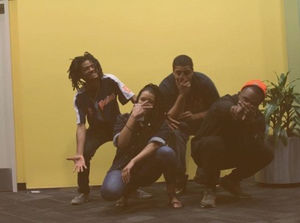DIA hosts Culture Lab Detroit discussion on ‘green spaces’
- Nicolette Rankin

- Sep 14, 2015
- 3 min read


“While the experience, interests and methodologies of our brilliant participants vary, at the core of each dialogue and program we foster through Culture Lab is the belief that art and design can be agents of positive change,” said Jane Schulak, Culture Lab Detroit co-founder and creative director.
Going green doesn’t simply apply to a certain lifestyle; it’s a culture—it’s art. Culture Lab Detroit presented “Architecture and Nature: Designing for Today’s Urban Landscape” on Sept. 11.
Culture Lab Detroit is an organization that fosters conversations and collaborations between Detroit and the international design community to drive culture as an agent of positive social change. This year’s theme was “Green Space.” This is a topic crucial to the vitality and regeneration of Detroit’s changing urban environment.
“While the experience, interests and methodologies of our brilliant participants vary, at the core of each dialogue and program we foster through Culture Lab is the belief that art and design can be agents of positive change,” said Jane Schulak, Culture Lab Detroit co-founder and creative director. “How we’re thinking about and approaching our green spaces in Detroit, and internationally, is a significant and necessary piece of this larger conversation.”
The panel, located at the Detroit Institute of Arts, featured Japanese architect Sou Fujimoto and landscape architect Walter Hood.
According to the program, Fujimoto established his own architecture firm in Tokyo called Sou Fujimoto Architects. He provides rigorous, diverse design services to clients around the world by blending natural and architectural elements to imagine what is possible in the built environment.
Fujimoto has achieved international recognition, including distinction as Wall Street Journal Architecture Innovator of the Year in 2014, winner of the design competition for the Liget Budapest House of Hungarian Music and winner of the International Competition for the Second Folly of Montpellier.
Fujimoto is the youngest architect to accept an invitation to design the annual summer pavilion for the Serpentine Galleries in London. His most important works include the Serpentine Gallery Pavilion 2013, House NA (2011), Musashino Art University Museum & Library (2010), Final Wooden House (2008) and House N (2008).
“I try to tie nature and architecture in my work,” Fujimoto said. “We try to create the platforms or the landscapes for people to choose their choice, so they can behave as they like.”
Hood is best known as a landscape designer, and he has been engaged in architectural commissions, urban design, art installations and research for more than twenty years.
The incorporation of local culture is fundamental to his approach to design. Hood focuses on adapting overlooked urban sites to create meaningful public spaces that enrich their communities. His earlier projects, which include Lafayette Square Park and Splash Pad Park, are regarded as transformative designs for the field of landscape architecture. Hood Design is the designer for the M. H. de Young Museum gardens and landscape, the new Sculpture Trail Terrace for the National Museum of Wildlife Art, The Broad art museum landscape and terrace and the Cooper Hewitt gardens.
“To be a landscape architect, you have to be into landscape, and you have to be into people," Hood said. “I try to get landscape to question people and get them to know who they are.”
Both architects conducted a 30-minute presentation showing their work and answered questions from the audience. For more information, visit: http://www.wjhooddesign.com or http://www.sou-fujimoto.net.






Comments